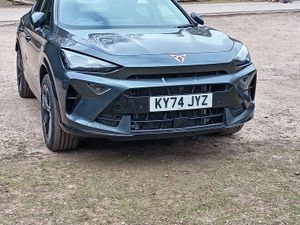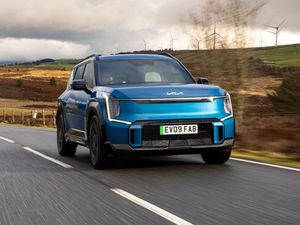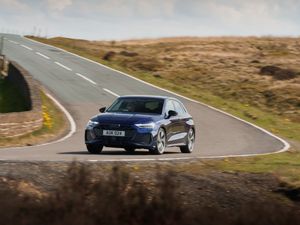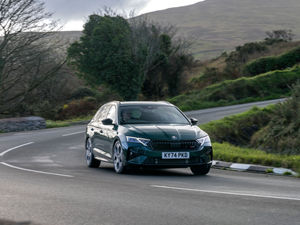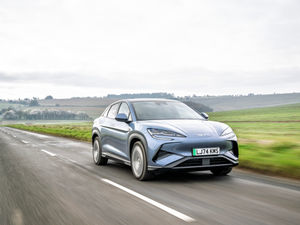The Renault Koleos is a classy but expensive SUV
The new Renault Koleos is the French manufacturer’s new halo model. Simon Davis puts the new SUV to the test in Finland.
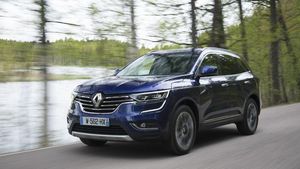
What’s new?
The Koleos represents a venture into unchartered territory for Renault. Where the original Koleos was more of a compact SUV, this new second-generation model moves the nameplate into the larger D-segment, and crowns the Renault crossover range.
Unveiled at the 2016 Beijing Motor Show, the new Koleos SUV is based on the same Renault-Nissan Alliance CMF-C/D (Common Module Family) platform as the Nissan X-Trail. However, where Nissan’s large SUV is available with a seven-seat configuration, Renault offers the Koleos strictly as a five-seater.
Looks and image
That decision to keep the Koleos as a five-seater was – according to Renault’s designers – partly made to keep the design of the SUV as stylish and upmarket as possible. While this immediately calls the old ‘form over function’ debate into mind, you do have to admit that the Koleos is an attractive beast.

Designed in conjunction with the Renault Talisman – which isn’t on sale in the UK – the Koleos does look every bit the high-end SUV, even if the large Renault badge that sits proudly on the SUV’s nose may not traditionally be associated with such aspirations.
The cabin, on the other hand, can’t quite cash the cheques that the Koleos’ exterior is writing. With plenty of leather and mod-cons such as heated seats and satellite navigation it isn’t a bad place to sit by any means, but there is still a noticeable amount of less-than-desirable looking plastics and surfaces throughout. Considering prices for the Koleos start at a hefty £27,500 in the UK – you’d expect a little more bang for your buck – especially when you compare its interior with the likes of rivals such as the Peugeot 5008 and Skoda Kodiaq.
Space and practicality
As far as interior space is concerned, you won’t be left wanting. Front seat passengers will find they have more than enough head- and shoulder-room, while two adults will be able to sit comfortably in the back seats over longer journeys. The back seats offer a generous amount of leg- and knee-room, and even with the optional sunroof specified head-room is more than plentiful.

One area where the Koleos does fall down – especially in comparison with rivals such as the Nissan X-Trail and Skoda Kodiaq – is the fact that it isn’t available with the optional third row of seats. However, this does pay dividends (albeit small ones) in terms of boot space, as the Koleos offers 579 litres of luggage space, while the X-Trail manages just 565 litres with the rear seats in place.
Behind the wheel
Considering the Koleos shares a platform with the Nissan X-Trail, it was surprising to find that the Renault didn’t really feel as well-sorted out on the road as its Japanese counterpart. The steering set-up was not quite as direct and lacked some of the feedback provided by the X-Trail, and there was also a touch more roll through the corners.
The Koleos also wasn’t as composed over bumps as its sister car – although this might have been down to the fact the roads on our test route in Finland were worse than those we tested the X-Trail on in Austria. The Koleos’ large 19-inch wheels also gave way to a great deal or tyre roar at speed, and would’ve contributed to the harsher ride that we experienced.

However, the large, comfortable seats and abundant cabin space did go some way to making up for this. Opting for smaller, 18-inch alloys would certainly remedy the large amounts of road noise, and make the Koleos an incredibly comfortable long-distance cruiser.
There are two diesel engine options available with the Koleos – a 128bhp 1.6-litre unit and larger 175hp 2.0-litre power plant.
While both engines do a good job of getting the Koleos up to speed in a timely manner, the six-speed manual transmission – which is the only transmission available with the 1.6-litre unit – is rather vague and slushy in action.
Value for money
With prices starting at £27,500 in the UK, there’s no arguing with the fact that the Koleos is a rather expensive proposition in its segment – especially considering the fact that it doesn’t quite offer the same levels of practicality as a few of its seven-seat rivals.

While prices are steep – moving up to £34,200 for the top-spec, Signature Nav 2.0-litre diesel model – standard specification is generous. Entry-level Dynamique S Nav vehicles benefit from a panoramic glass sunroof, 18-inch alloys, automatic dual-zone climate control, cup-holders that can heat or cool drinks in the front of the cabin, and Renault’s seven-inch R-LINK2 infotainment system that incorporates satellite navigation, DAB radio, Apple CarPlay and Android Auto.
Signature Nav models cost from £29,000 when equipped with the 1.6-litre diesel engine. This top-flight trim level adds full leather upholstery, 19-inch alloys a larger 8.7-inch touchscreen infotainment system and a powered hands-free tailgate, among other features.

Who would buy one?
The Renault Koleos is a car that will appeal to anyone in the market for a stylish, slightly left-field SUV. It’s dashing looks will no doubt appeal to many, as will its comfortable and well-appointed interior. However, there are a couple of flies in the Renault’s ointment – the rather high asking price and the fact it doesn’t offer seven seats.
FACTS AT A GLANCE
Model: Renault Koleos Signature Nav dCi 130
Base price: £31,900
Engine tested: 1.6-litre four-cylinder diesel
Power: 128bhp
Torque: 320Nm
Max speed: 115mph
0-60mph: 11.2 seconds
MPG: 57.6
Emissions: 128g/km

